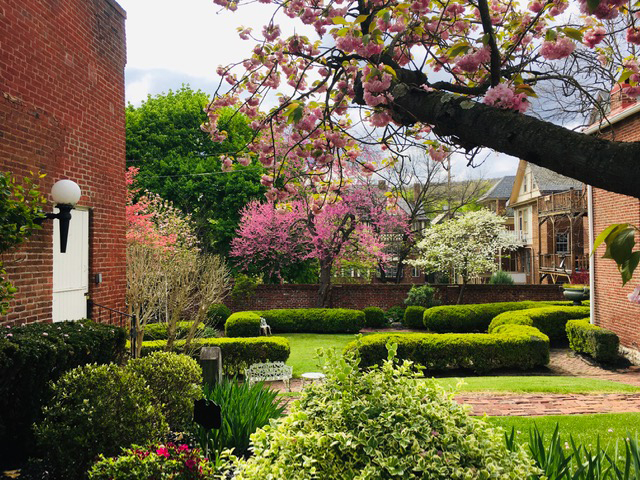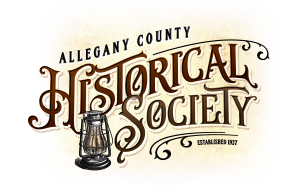HISTORICAL SOCIETY LAUNCHES MASTER GARDENER PARTNERSHIP FOR GORDON-ROBERTS COURTYARDCUMBERLAND MD
The Allegany County Historical Society is entering a partnership with the Master Gardener program of The University of Maryland Extension program to revitalize the courtyard of The Gordon-Roberts House. The house was built in 1867 by Josiah Hance Gordon at 218 Washington Street and has been owned by the historical society since 1955. It serves as the Historical Society headquarters and has been restored the era of the 1890s, when the family of Milnor Roberts lived there.
In collaboration with Sherry Frick, Master Gardener, the historical society is designing and planting a new layout for the courtyard area that will improve the historical aesthetics and allow the space to be better utilized. Unhealthy and uninteresting plants and shrubbery will be removed and replaced with new varieties selected by the local Master Gardener’s group. The new garden will add more flowers, a vegetable garden, an herb garden, two pollinator beds, and an allium raised bed.
Herbs and vegetables will be planted with plans for the ingredients to be used not only as fresh additions to the menu of the many events hosted on the premises but also in future community endeavors. Popular and useful herbs such as Spearmint, Greek Oregano, Basil, Calendula and Chives will be planted in a sun dial bed. These herbs will grow next to the vegetable garden including various beans, cabbages, tomatoes and root vegetables.
The plans preserve the brick and hedges already in place to maintain the integrity of the garden. The new developments will not disturb any new or untouched areas and is being undertaken with the permission of the Maryland Historical Trust under the term of the historical easement on the property. Excavation will be monitored by Suzanne Trussell, archaeologist. Trussell, who owns and operates Oxbow Cultural Resources, provides management services for the historical society, and will be present with screens to sample soil deposits and identify any objects as they surface.
Incorporating archaeological monitoring into this project will add to the study of the Gordon-Roberts property. To the society’s knowledge, there has never been an archaeological investigation on the property before, nor have any artifacts been recovered from the yard. A supposition in the Maryland Historical Trust’s files states that a large anomaly in the yard could be indicative of a trench once part of Fort Cumberland. The jail for the fort was located within sight of where the Gordon-Roberts House now stands. Currently, there is no visible evidence of this subsurface feature. The possible culture resources below the property were taken into consideration for this project and will be monitored and preserved.
The garden improvement will enhance the beauty of the property and expand the educational space and teaching opportunities available through the historical society. The varieties of plants and herbs are in line with those used in the Victorian era for medicines and daily recipes. Volunteers and staff intend to use the garden for educational endeavors and a touchstone to the past using the very plants that held such importance to the people of the time.
Once completed, the Historical Society plans to hold a celebration Garden Party at an appropriate time. Previously, the space has been used for small parties and events both inside the home and in the courtyard. The new development will render the space an even more picturesque option for gatherings- both formal and casual. A revitalization of the carriage house on property is underway to utilize it as space for events on the ground as well- both private functions and Historical Society sponsored.
The historical society wishes to extend its gratitude to board member Debbie Grimm, for her efforts in spearheading this endeavor and coordinating with the University of Maryland’s Master Gardener program.




